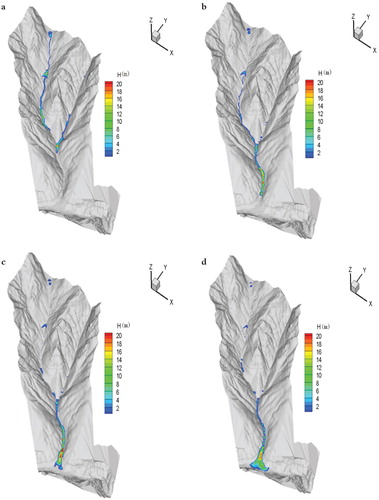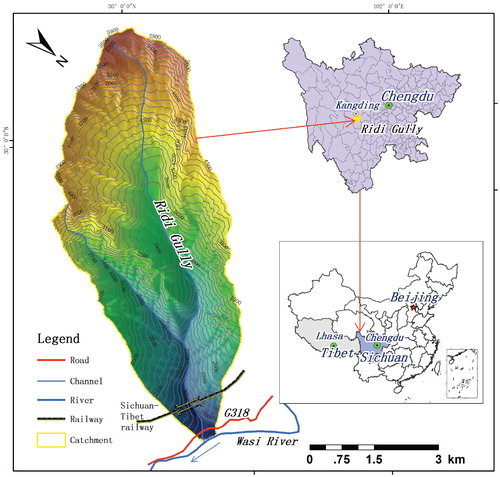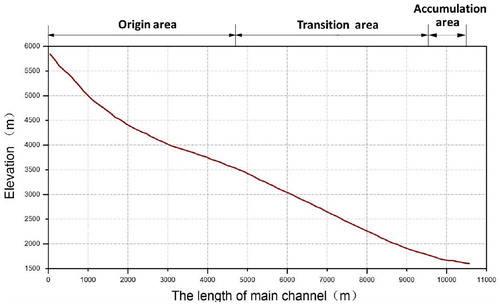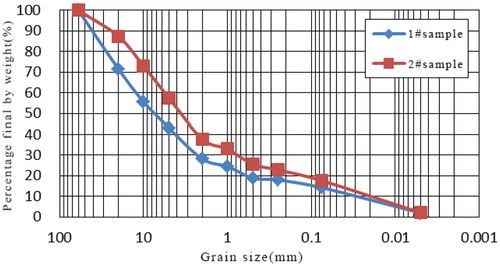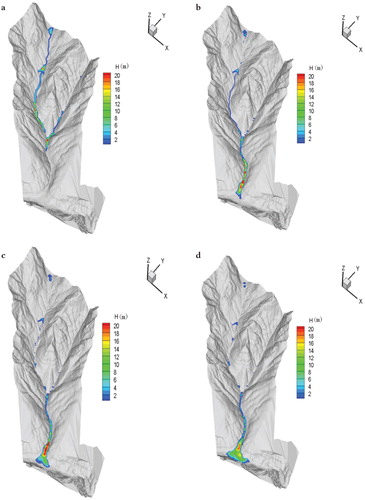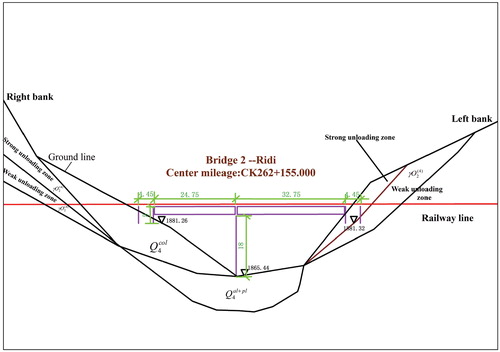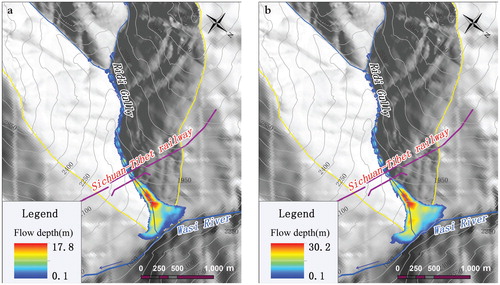Figures & data
TABLE 1 Topographical parameters of channels in Ridi Gully.
Table 2 Statistical results at each slope classification of Ridi Gully.
FIGURE 2. Sources of loose solid materials for debris flow. (a) Slope failure, (b) bank collapse, and (c) moraine deposit.
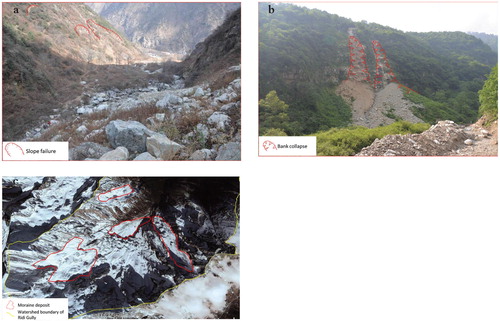
FIGURE 3. The average monthly precipitation at Kangding and Luding meteorological stations in the study area.
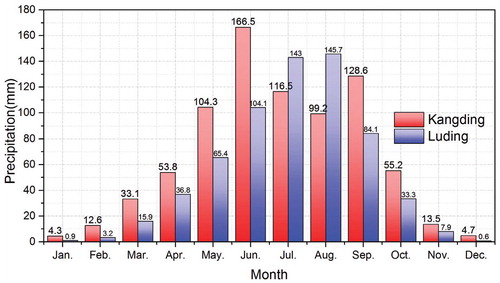
TABLE 3 Basic parameters and flood peak discharge of Ridi Gully.
TABLE 4 Debris flow peak discharge of Ridi Gully.
TABLE 5 Debris flow velocity of Ridi Gully
TABLE 6 The total volume of one debris flow and the total amount of solid material in Ridi Gully.
FIGURE 8. The snapshots of flow depth in Ridi Gully following a 100-year return period precipitation. (a) t = 150 s, (b) t = 600 s, (c) t = 900 s, and (d) t = 1500 s.
